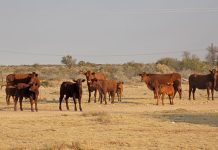The International Wine Industry Greenhouse Gas Accounting Protocol has been released. The protocol was developed in partnership with SA’s Integrated Production of Wine programme (IPW), the Wine Institute of California, New Zealand Winegrowers and the Winemakers’ Federation of Australia by the wine resource accounting consultancy firm, Provisor.
Jacques Rossouw, manager of IPW, said although the wine industry and most other agricultural industries are considered low producers of carbon emissions, greenhouse gas issues, such as gaining market access to retailers interested in carbon footprinting, providing data for marketing purposes and/or carbon-credit accounting, are becoming increasingly significant to brands and image.
The goal of the project was to create a standardised, easy-to-use protocol and calculator that would measure the carbon footprints of winery and vineyard operations of all sizes. The protocol is based on the Greenhouse Gas Protocol set by the World Resources Institute (WRI) which provides the accounting framework for nearly every greenhouse gas standard and programme, according to Rossouw.
The partnership aims to get the protocol endorsed by the WRI, and will also submit it for endorsement to the International Organisation for Viticulture and Viniculture and to the International Federation for Wine and Spirits.
Other regions that were not initially part of the development, such as France and Oregon in the US, have also approached the partnership and inquired about the protocol. “These countries are interested in using the protocol, but first want to test and evaluate it,” said Rossouw, adding that the protocol would become stronger as more countries endorsed it.
The first version of the protocol and the MS Excel-based calculator is available on the IPW website. The protocol and calculator will be continually updated and refined as new information becomes available. Future plans include protocol verification, developing more sophisticated online tools suitable for independent verification, and integration of the calculator into the IPW guidelines.
Rossouw said that in 1998 many local grape growers and winemakers were among the first in the world to promote environmentally friendly production practices by initiating the IPW scheme.
They did even more groundbreaking work when they surpassed this commitment in 2004, launching the Biodiversity and Wine initiative (BWI). Under this scheme over 80 farmers and five cooperatives have in less than three years conserved over 50 000ha of land that could have been used for agriculture.
Rossouw believes the protocol and calculator will help the wine community understand which operations result in high greenhouse gas emissions and why, and help managers to develop strategies for reducing emissions. – Glenneis Erasmus
Now you can calculate how green your wine really is
The International Wine Industry Greenhouse Gas Accounting Protocol has been released.








